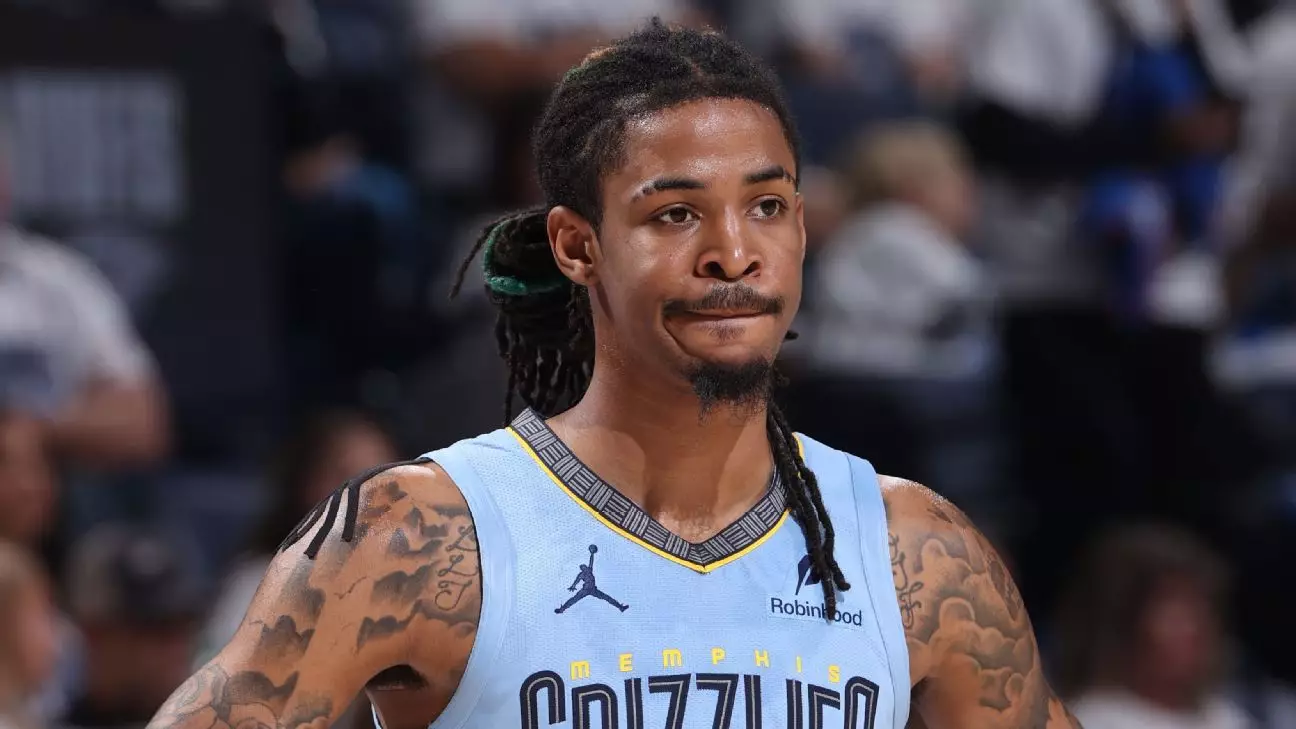In the high-energy realm of sports, tensions can escalate quickly, particularly during a heated pickup basketball game. Such was the case in July 2022 when NBA superstar Ja Morant found himself embroiled in a controversy following an altercation with teenager Joshua Holloway. Invited to play at the home of Morant’s parents, Holloway, then just 17 years old, engaged in what was meant to be a friendly competition. However, the atmosphere soured when a seemingly innocent play resulted in a single punch that would echo through both legal and personal realms for months to come. Holloway claimed that Morant assaulted him, but the subsequent legal battle would hinge on nuances of self-defense and the complexities that surround accountability in sports.
The Legal Landscape: Self-Defense Claimed and Upheld
The crux of the lawsuit hinged upon whether Morant’s actions could be perceived as self-defense. During a pivotal hearing, Morant testified that he felt physically threatened after a basketball was hurled at him with considerable force by Holloway, who subsequently assumed an aggressive stance. With accusations flying and reputations on the line, the proceedings unveiled a compelling journey through Tennessee’s legal system. Shelby County Circuit Judge Carol Chumney ultimately dismissed the lawsuit, declaring that Morant acted within his rights under Tennessee’s “stand your ground” law, a provision designed to protect individuals in their homes when they feel threatened.
This ruling not only illustrated Morant’s legal vindication but also initiated discussions around the responsibilities athletes have, both on and off the court. As sports figures often serve as inspiration for younger generations, such incidents—or the handling of them—become teaching moments regarding conflict resolution and personal accountability.
Character Assessment: The Role of Leadership
In her judgment, Judge Chumney noted that both Morant and Holloway hold influential positions within their respective basketball communities. The potential for positive influence—or harmful behaviors—exists in equal measure. With Morant’s status as a two-time All-Star and Holloway’s burgeoning athletic career at Samford University, it is essential that they embody the principles of leadership and sportsmanship. Chumney’s ruling implied a hope that both athletes can channel their experiences into meaningful lessons for their peers and fans alike.
Such sentiments resonate deeply in the current landscape of sports, where the need for athletes to act as role models has come under scrutiny. The law may allow certain interpretations of self-defense, but the expectation for maturity and responsibility extends far beyond the legal ramifications. Athletes, especially those in the public eye, are frequently tasked not just with performance metrics but also with modeling how to navigate conflict gracefully.
Public Perception and Consequences
Case outcomes like this can significantly sway public opinion, especially when figures of Morant’s caliber are involved. The narrative that evolves from these instances can either rehabilitate or damage reputations, which extends into endorsements, public support, and ultimately, one’s legacy. While Morant retained his legal victory, the public’s eye remains vigilant, scrutinizing his next moves as he continues to navigate the pressure of fame and the expectations that accompany it.
What could have been a simple basketball game has morphed into a cautionary tale about the volatile fusion of sport, youth, and manhood. This incident raises critical questions about how young athletes cope with aggression, the influence of role models in high-stakes situations, and the expectation for decorum in competitive environments. By ensuring that accountability is addressed proactively, institutions affiliated with these athletes must reinforce the significance of measured responses and conflict management.
Moving Forward: Lessons for the Future
As athletes move through their careers, they must grapple with the balance of high emotions inherent in competitive sports alongside the expectations of appropriate behavior. Judge Chumney’s hope that both Morant and Holloway will minimize their courthouse visits and maximize their court time serves as an essential reminder: growth comes from learning how to manage passions and conflicts effectively. The empowering narrative emerging from this case encourages not simply victory on the court but also maturity off of it, fostering a new generation of athletes who can learn from past mishaps—turning lessons into life skills.

